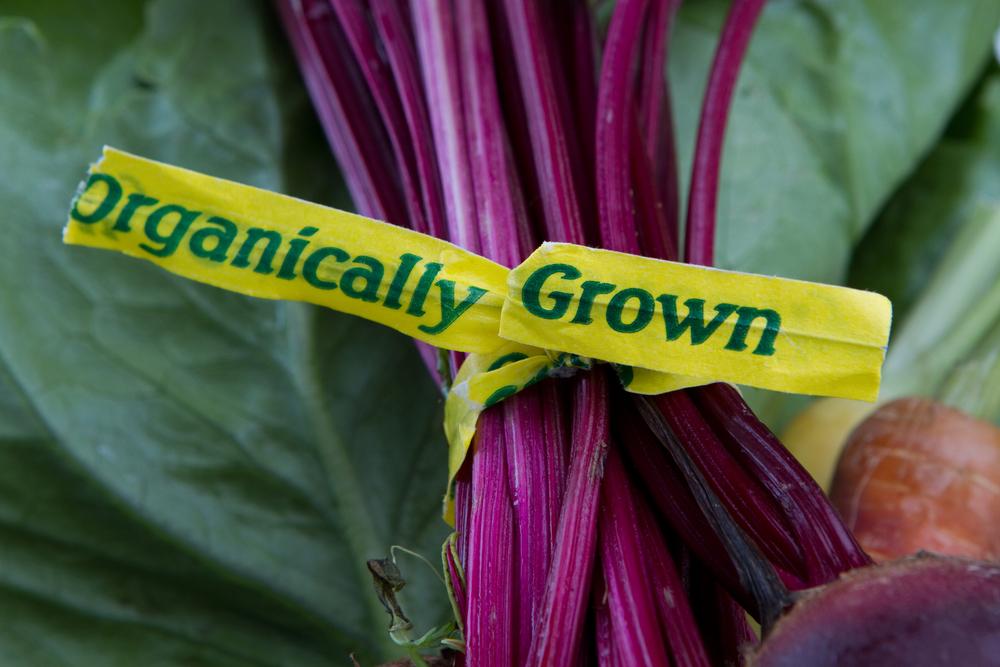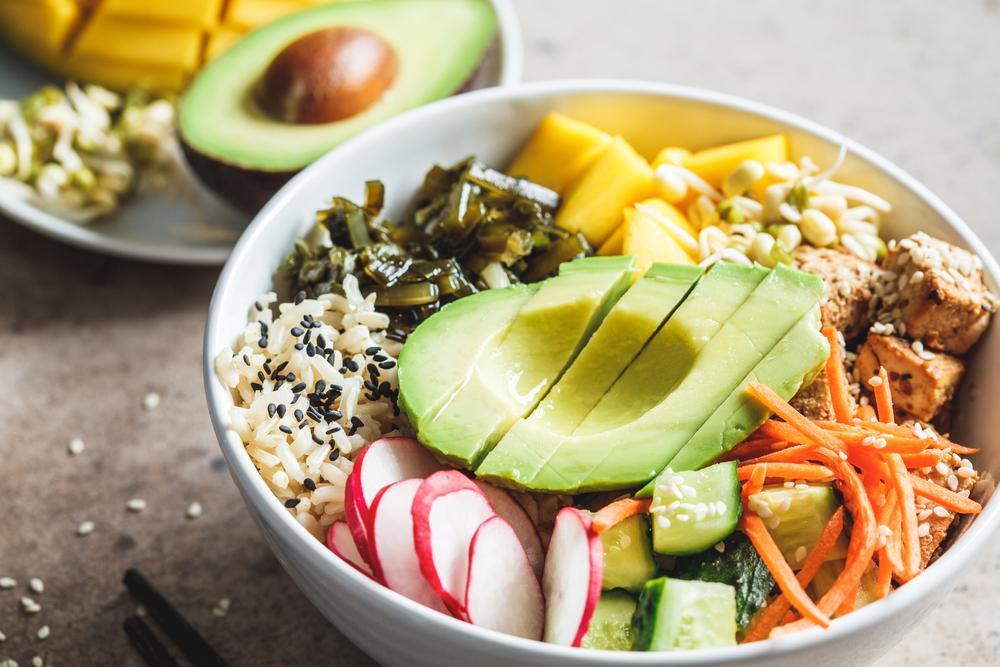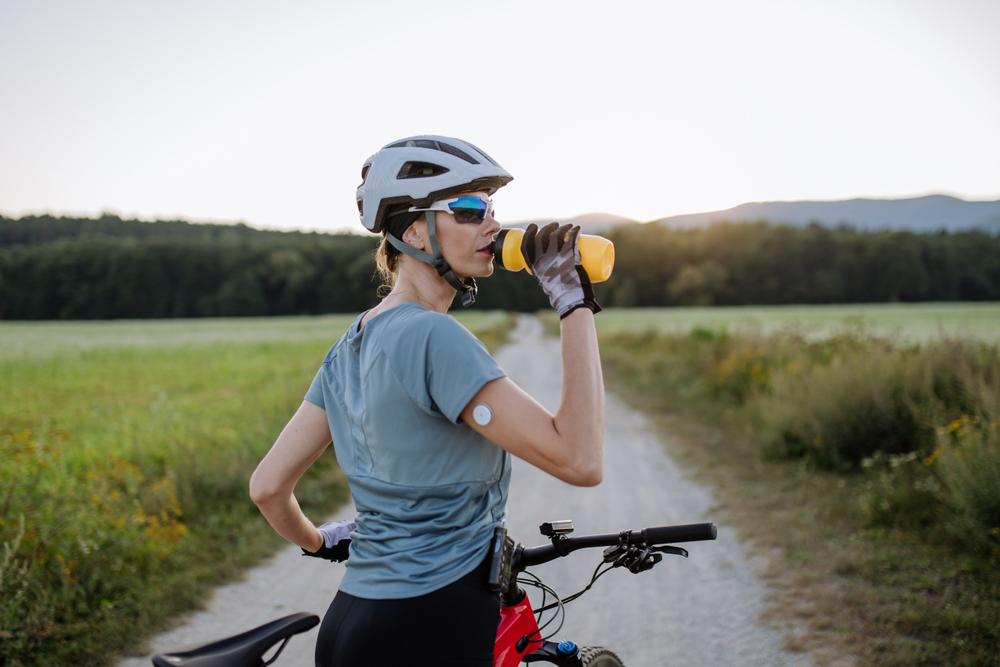TrueFood for TrueSport aims to teach athletes, parents, and coaches how to become informed decision makers regarding the ethics of food choices, while promoting the health and performance of the young athlete.
This resource provides sample meal plans developed for an athlete weighing 150 lbs., with the assumption that training will occur in the afternoon. Matching exercise intensity/volume with proper fueling improves performance and decreases the likelihood of fatigue and injury.
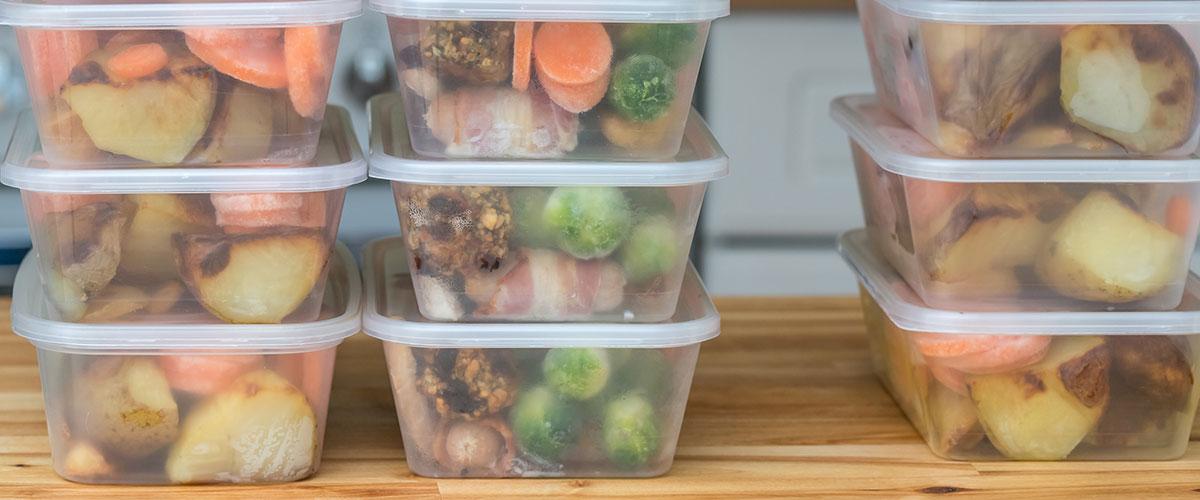
It is important to include a healthy balance of protein, carbohydrates, fruits and vegetables, and fat with each meal, as these all help create the fuel athletes need to keep up with their levels of increased activity. However, it is not recommended to eat the same foods over multiple days, as consuming a variety of foods will provide the most vitamins, minerals, and nutrients required for optimal performance.
Protein
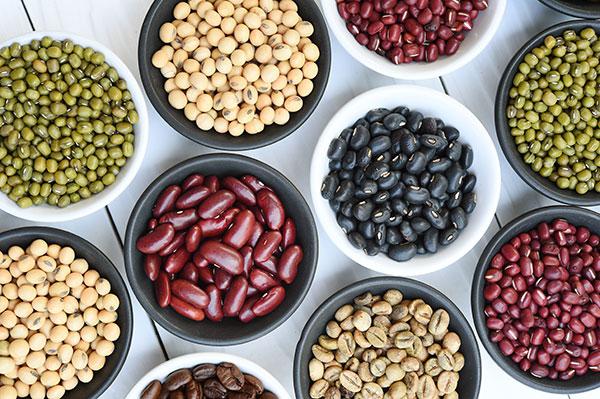 Protein is important for building and repairing muscle. When selecting sources of protein, keep in mind that you can also get your portion of protein from plant-based proteins, including beans, quinoa, buckwheat, rye, barley, soy, lentils, and nuts. Other TrueFood protein choices include pasture-raised poultry and pork, grass-fed beef products, or ethically caught fish. As you will see in the meal plans, not every meal needs meat to provide enough protein for an athlete!
Protein is important for building and repairing muscle. When selecting sources of protein, keep in mind that you can also get your portion of protein from plant-based proteins, including beans, quinoa, buckwheat, rye, barley, soy, lentils, and nuts. Other TrueFood protein choices include pasture-raised poultry and pork, grass-fed beef products, or ethically caught fish. As you will see in the meal plans, not every meal needs meat to provide enough protein for an athlete!
Carbohydrates
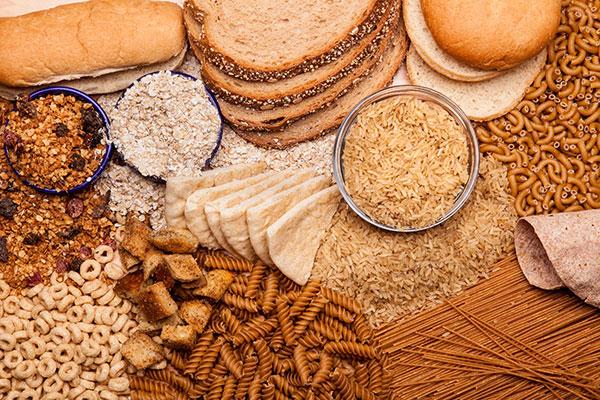 As intensity increases, your body uses more carbohydrates for energy in the form of glucose and glycogen, so it is important to fuel prior to exercise, as well as replenish carbohydrate stores after exercise. Whole grains are the best choice of carbohydrates during low and moderate exercise. Fiber is critical for a healthy gut and a strong immune system. For hard training or competition, replacing whole grains with more refined grains allows for quicker digestion, providing energy at a faster rate.
As intensity increases, your body uses more carbohydrates for energy in the form of glucose and glycogen, so it is important to fuel prior to exercise, as well as replenish carbohydrate stores after exercise. Whole grains are the best choice of carbohydrates during low and moderate exercise. Fiber is critical for a healthy gut and a strong immune system. For hard training or competition, replacing whole grains with more refined grains allows for quicker digestion, providing energy at a faster rate.
Fruits and Vegetables
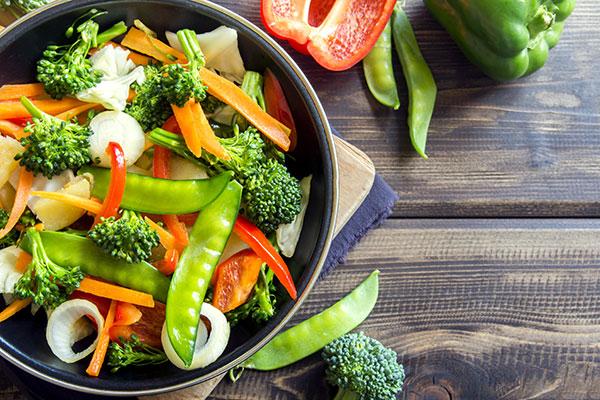 Fruits and vegetables contain vitamins and antioxidants that have many functions in the body, including protecting cells from damage and helping an athlete recover. These foods have the best nutrition and flavor when they are eaten within the season they grow. During intense training sessions or competition, it is best to choose cooked vegetables (stewed, stir-fried, or soup) to avoid lengthy digestion time and speed up recovery.
Fruits and vegetables contain vitamins and antioxidants that have many functions in the body, including protecting cells from damage and helping an athlete recover. These foods have the best nutrition and flavor when they are eaten within the season they grow. During intense training sessions or competition, it is best to choose cooked vegetables (stewed, stir-fried, or soup) to avoid lengthy digestion time and speed up recovery.
Fat
Fat is important for providing energy during low to moderate intensity exercise and rest periods, and it helps your body absorb fat-soluble vitamins, reduces inflammation, and provides flavor. Choose healthy fats from plants (olive oil, nuts, seeds) and fish as training loads increase.
These seasonal meal plans include examples of meals and snacks for easy, moderate, and hard training days.
- Easy Training: 1 light technical/skill-based session/day, cardio, or recovery day
- Moderate Training: 1-2 moderate technical/skill-based sessions/day or moderate to hard training with more than 24 hours of recovery
- Hard Training: High volume and/or intensity: more than 2 sessions/day, training adaptation (heavy lifting, altitude training), or simulated races
EASY
Breakfast:
1 cup of cantaloupe served with 1 slice of whole grain toast, topped with 2 local eggs cooked in olive oil
Morning Snack:
Medium apple topped with 2 Tbsp peanut butter and 1 Tbsp honey, with 1 cup organic milk
Lunch:
Salad: 2 cups of leafy greens, 1/2 cup roasted squash, 1/4 cup whole grains, 2/3 cup Anasazi beans topped with 2 Tbsp dried fruit, crumbled feta, and vinaigrette
Afternoon Snack:
10 whole grain pretzels with hummus and water
Dinner:
Grain bowl: 1 cup of roasted beets and carrots, 1/2 cup sautéed red cabbage, 1 cup quinoa, 1 Tbsp vinaigrette topped with 2 oz of grilled chicken
Evening Snack:
1/2 cup grapes, handful whole grain crackers, 1 oz cheese, 1 Tbsp walnuts
Nutrition Facts:
2,000 calories, 95 g protein, 285 g carbohydrate, 60 g fat, 50 g fiber
MODERATE
Breakfast:
1 cup of cantaloupe served with 1 slice of whole grain toast, topped with 2 local eggs cooked in olive oil
Morning Snack:
1/2 multigrain English muffin topped with 1 Tbsp each of honey and peanut butter, a medium apple, with 1 cup organic milk
Lunch:
Salad: 2 cups of leafy greens, 1/2 cup roasted squash, 1/4 cup emmer, 2/3 cup Anasazi beans topped with 2 Tbsp dried fruit, crumbled feta, and vinaigrette
Afternoon Snack:
Handful of trail mix with a handful of spelt pretzels and 1 cup of orange juice
Dinner:
Grain bowl with 1 cup roasted beets and carrots, 1/2 cup sautéed red cabbage, 1 cup quinoa, 1/2 cup lentils, 1 Tbsp vinaigrette
topped with 2 oz of chicken, and a sliced pear
Evening Snack:
1 cup grapes, handful ancient grain crackers, and 1 oz cheese
Nutrition Facts:
2,600 calories, 110 g protein, 415 g carbohydrate, 65 g fat, 65 g fiber
HARD
Breakfast:
2 slices sourdough bread French toast topped with a thick smear of peanut butter, fruit compote, and slivered almonds
Morning Snack:
English muffin topped with 2 Tbsp each of peanut butter and honey, 1/2 cup apple sauce, with 1 cup organic milk
Lunch:
1 cup of couscous with 1/4 cup garbanzo beans, 1 cup roasted squash, and 1/2 cup wilted greens in olive oil topped with 2 oz roasted pork and crumbled feta, with 1 slice pumpkin pie
Pre-workout Snack:
15 pretzels and water
During Workout:
20 oz sports drink
Post Workout:
1 cup yogurt with 1/4 cup granola
Dinner:
Grain bowl with 1 cup roasted beets and carrots, 1/4 cup sautéed red cabbage, 1 cup couscous, 1 Tbsp vinaigrette, and topped with
2 oz of chicken, and sliced pear with honey and cinnamon
Evening Snack:
1 cup grapes, 2 handfuls whole grain crackers, and 1 oz cheese
Nutrition Facts:
3,500 calories, 130 g protein, 500 g carbohydrate, 100 g fat, 45 g fiber
EASY
Breakfast:
1 cup winter squash porridge topped with raisins, nuts, and a splash of organic milk
Morning Snack:
1 cup plain organic yogurt with 1/4 cup granola
Lunch:
2 cups of salad (cabbage, watermelon radishes, kale, vinaigrette) with a whole wheat pita pocket filled with 2 oz tuna
Afternoon Snack:
1 medium apple, 2 Tbsp nuts
Dinner:
3/4 cup whole grain pasta, 1/2 cup pinto beans, 1/2 cup sautéed Delicata squash with onion and garlic, tossed with 1/2 cup fresh spinach leaves, a drizzle of olive oil, and shaved parmesan
Evening Snack:
1/2 whole grain peanut butter and jelly sandwich with 1/2 cup organic milk
Nutrition Facts:
2,000 calories, 90 g protein, 280 g carbohydrate, 60 g fat, 45 g fiber
MODERATE
Breakfast:
1½ cups winter squash porridge topped with raisin, nuts, and 1/2 cup organic milk
Morning Snack:
1 cup plain organic yogurt with 1/2 cup granola
Lunch:
2 cups salad (cabbage, watermelon radishes, kale, vinaigrette) with a whole wheat pita pocket filled with 2 oz tuna, and 1 cup apple sauce
Afternoon Snack:
1 medium apple, handful nuts, and spelt pretzels
Dinner:
1 cup whole grain pasta, 1/2 cup pinto beans, 3/4 cup sautéed Delicata squash with onions and garlic, tossed with 1/2 cup fresh
spinach leaves, a drizzle of olive oil, and shaved parmesan
Evening Snack:
1/2 whole grain peanut butter and jelly sandwich with 3/4 cup organic milk
Nutrition Facts:
2,500 calories, 100 g protein, 355 g carbohydrate, 75 g fat, 55 g fiber
HARD
Breakfast:
1 bowl winter squash porridge topped with butter, raisins, nuts, and 1 cup organic milk
Morning Snack:
1 bowl organic honey yogurt with 1 cup applesauce, 1 cup granola
Lunch:
Bowl of minestrone soup with crackers, 2 pita pockets filled with 1 oz tuna mixed with olive oil and balsamic vinegar
Pre-workout Snack:
1 cup applesauce and glass of water
During Workout:
20 oz sports drink
Post Workout:
16 oz organic chocolate milk
Dinner:
2 cups whole grain pasta, 1 cup sautéed Delicata squash with onion and garlic, tossed with 1/4 cup fresh spinach leaves, a drizzle of olive oil, splash of tomato sauce, and shaved parmesan
Evening Snack:
Peanut butter and jelly sandwich with 1 cup organic milk
Nutrition Facts:
3,400 calories, 115 g protein, 525 g carbohydrate,100 g fat, 50 g fiber
EASY
Breakfast:
1 cup whole grain (no sugar added) cereal and 1 cup organic milk, topped with 1 cup strawberries and 1/4 cup pecans
Morning Snack:
1 bundle carrot sticks, fresh raw asparagus, and 1/2 cup hummus
Lunch:
2 cups salad (spring greens, parsley, and vinaigrette) served with an open-faced turkey sandwich on whole grain sourdough bread
with mustard
Afternoon Snack:
Handful dried cherries, almonds, and dark chocolate
Dinner:
Stir fry with 2 cups vegetables (mushrooms, kale, chard, and snow peas), 1 Tbsp soy sauce served over 2/3 cup brown rice, topped with 2 oz chicken and cashews
Evening Snack:
1 homemade oatmeal raisin cookie and 1/2 cup frozen yogurt
Nutrition Facts:
2,000 calories, 90 g protein, 260 g carbohydrate, 65 g fat, 30 g fiber
MODERATE
Breakfast:
1 ½ cups whole grain (no sugar added) cereal and 1 ½ cups organic milk topped with 1 cup strawberries, and 1/4 cup pecans
Morning Snack:
1 bundle of carrot sticks and fresh raw asparagus, 1/2 cup hummus, and 5 spelt crackers
Lunch:
1 ½ cups of salad (spring greens,parsley, and vinaigrette) served with turkey sandwich on whole grain sourdough bread with mustard
Afternoon Snack:
Handful of dried cherries, almonds, dark chocolate, and granola bar
Dinner:
Stir fry with 2 cups vegetables (mushrooms, kale, chard, and snow peas), 1 Tbsp soy sauce, 1 cup brown rice, topped with 2 oz chicken and cashews
Evening Snack:
1 homemade oatmeal raisin cookie and 3/4 cup frozen yogurt
Nutrition Facts:
2,500 calories, 100 g protein, 385 g carbohydrate, 75 g fat, 40 g fiber
HARD
Breakfast:
Bowl of cereal and 1 ½ cups organic milk, topped with 1 cup strawberries and 1/4 cup pecans
Morning Snack:
Sautéed asparagus in olive oil with 1 sunny side up local egg and a slice of toast
Lunch:
Turkey sandwich with cheese and mustard on white sourdough bread served with 1 cup spring pea minestrone soup
Pre-workout Snack:
Handful graham crackers with jam and glass of water
During Workout:
20 oz sports drink
Post Workout:
1 cup yogurt with a drizzle of honey and a granola bar
Dinner:
Rice bowl: 2 cups of white rice, 1 cup vegetables (mushrooms and snow peas), 2 Tbsp soy sauce, topped with 2 oz chicken and cashews
Evening Snack:
2 homemade oatmeal cookies and 1 cup frozen yogurt, topped with pecans
Nutrition Facts:
3,500 calories, 110 g protein, 560 g carbohydrate, 100 g fat, 40 g fiber
EASY
Breakfast:
Smoothie Bowl: 1/2 cup yogurt, 1/2 cup organic milk, and 1 cup peaches, topped with 1/2 cup granola
Morning Snack:
1 cup cherries, 1 Tbsp cashews, and 10 animal crackers
Lunch:
2 cups Panzanella Salad topped with a Protein Flip Burger and 1 cup watermelon
Afternoon Snack:
1/2 cup fresh berries with a splash organic yogurt
Dinner:
2 cups grilled vegetables (summer squash and eggplant) with 3/4 cup roasted potatoes cooked with fresh garlic, whole chile peppers, and oregano in olive oil, and topped with 3 oz grilled pasture-raised pork chop
Evening Snack:
Slice of fruit pie with a dollop of plain organic yogurt
Nutrition Facts:
2,000 calories, 90 g protein, 265 g carbohydrate, 70 g fat, 40 g fiber
MODERATE
Breakfast:
Smoothie Bowl: 1/2 cup yogurt, 1/2 cup organic milk, 1 cup peaches, and a drizzle of honey, topped with 1/2 cup granola
Morning Snack:
1 cup cherries, 1 Tbsp cashews, and a handful of animal crackers
Lunch:
2 cups Panzanella Salad served with a Protein Flip Burger on a whole grain bun and 1 cup watermelon
Afternoon Snack:
1/2 cup fresh berries with a splash of organic yogurt
Dinner:
2 cups grilled vegetables (summer squash and eggplant) with 1 ½ cups roasted potatoes cooked with fresh garlic, whole chile peppers, and oregano in olive oil, topped with 3 oz grilled pasture-raised pork chop, and 1/2 cup berry sorbet
Evening Snack:
Slice of fruit pie with a dollop of vanilla yogurt
Nutrition Facts:
2,500 calories, 100 g protein, 385 g carbohydrate, 75 g fat, 50 g fiber
HARD
Breakfast:
Smoothie Bowl: 1 cup fruit yogurt, 1/2 cup milk, and 1 cup peaches served with 1 cup granola and nuts
Morning Snack:
1 cup cherries, 2 Tbsp cashews, and a handful of animal crackers
Lunch:
2 cups cilantro white rice topped with 3 oz grilled fish and 1 cup watermelon, and a Panzanella side salad
Pre-workout Snack:
1 cup fresh berries, honey, and glass of water
During Workout:
20 oz sports drink
Post Workout:
10 oz berry smoothie with milk and honey
Dinner:
2 cups roasted potatoes cooked with fresh garlic, whole chile peppers, and oregano in olive oil with 1/2 cup grilled vegetables (summer squash, corn, and eggplant) topped with 3 oz grilled pasture-raised pork chop, and 1 cup berry sorbet
Evening Snack:
Slice of fruit pie with ice cream
Nutrition Facts:
3,500 calories, 110 g protein, 555 g carbohydrate, 105 g fat, 45 g fiber

